
-
Find the right food for your petTake this quiz to see which food may be the best for your furry friend.Find the right food for your petTake this quiz to see which food may be the best for your furry friend.Featured products
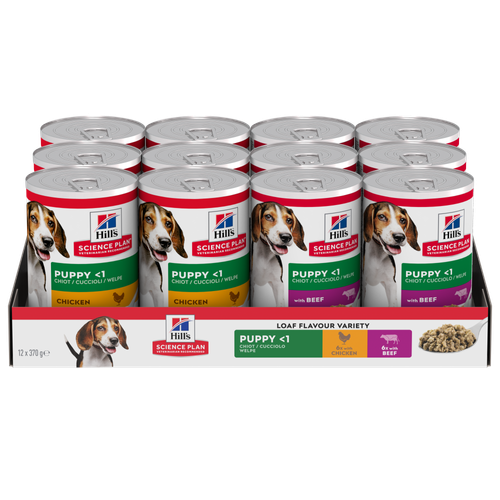 Puppy Food
Puppy FoodHill's Science Plan Puppy Multipack Wet Dog Food with Chicken & Beef are complete premium pet foods for growing puppies from weaning until 1 year old and for pregnant and nursing dogs. Your puppy will love these deliciously smooth and savoury minced loaves, formulated for balanced nutrition and overall health.
Shop Now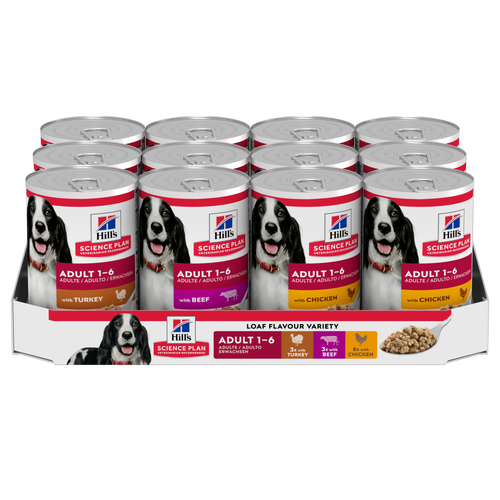 Adult Wet Dog Food with Beef
Adult Wet Dog Food with BeefHill's Science Plan Adult Multipack Wet Dog Food with Chicken, Beef & Turkey are complete premium pet foods for adult dogs from 1 year. Your dog will love these deliciously smooth and savoury minced loaves, formulated for balanced nutrition and overall health.
Shop Now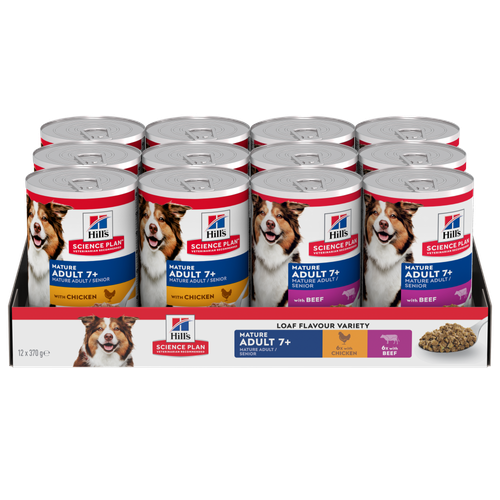 Mature Adult Dog Food
Mature Adult Dog FoodHill's Science Plan Mature Adult Multipack Wet Dog Food with Chicken & Beef are complete premium pet foods for mature adult dogs from 7 years. Your dog will love these deliciously smooth and savoury minced loaves, formulated to deliver the appropriate amount of energy to support the needs of adult dogs.
Shop NowFeatured products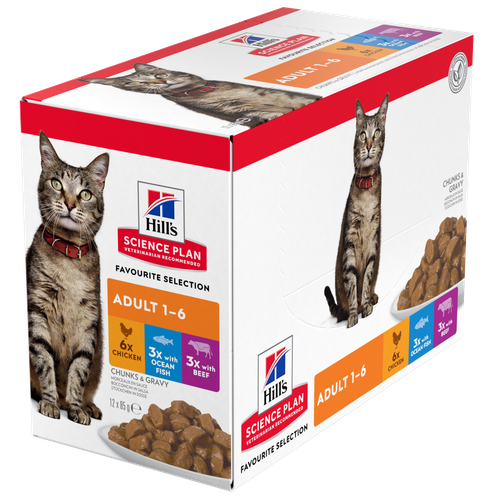 Adult Multipack Wet Cat Food with Beef, Ocean Fish & Chicken
Adult Multipack Wet Cat Food with Beef, Ocean Fish & ChickenTender chunks in gravy for cats, with high-quality protein to maintain lean muscle. With vitamin E and omega-3s & -6s for healthy skin and balanced minerals to support healthy vital organs.
Shop Now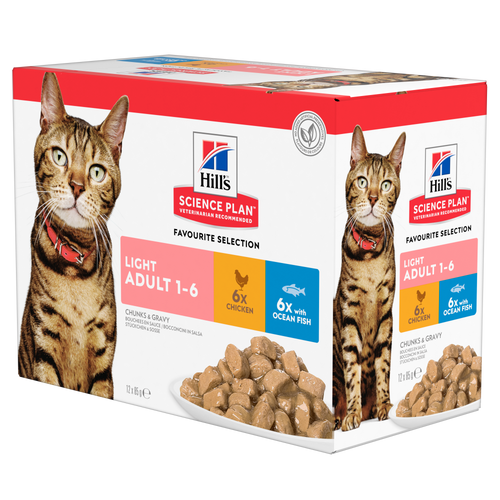 Light Adult Multipack Wet Cat Food with Chicken & Ocean Fish
Light Adult Multipack Wet Cat Food with Chicken & Ocean FishTender chicken chunks in gravy for cats, with L-carnitine and fewer calories for ideal weight management. Packed with high-quality protein, omega-6s, and vitamin E for shiny fur and healthy skin.
Shop Now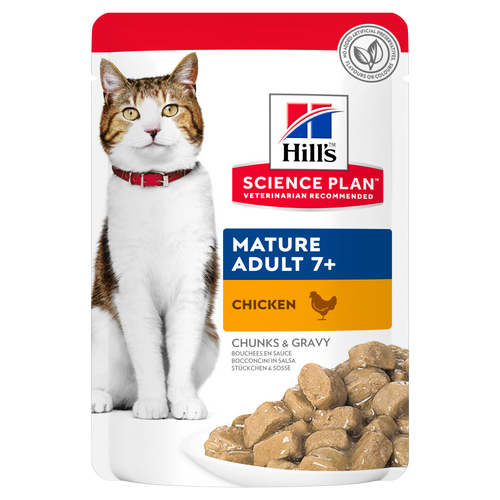 Mature Adult Wet Cat Food with Chicken
Mature Adult Wet Cat Food with Chicken
Tender chicken chunks in gravy for mature adult cats. Made with easy-to-digest ingredients, high-quality protein for lean muscle maintenance and antioxidant vitamins C+E for optimal health.
Shop Now -
Dog
- Dog Tips & Articles
-
Health Category
- Weight
- Food & Environmental Sensitivities
- Urinary
- Digestive
- Joint
- Kidney
-
Life Stage
- Puppy Nutrition
- Adult Nutrition
- Senior Nutrition
Cat- Cat Tips & Articles
-
Health Category
- Weight
- Skin & Food Sensitivities
- Urinary
- Digestive
- Kidney
-
Life Stage
- Kitten Nutrition
- Adult Nutrition
Featured articles The Right Diet For Your Pet
The Right Diet For Your PetIn people, the right diet is very important. If you are eating the wrong way for your metabolism, activity level, age and lifestyle you could end up with health issues.
Read More The Incredible Science Behind Your Pet's Microbiome
The Incredible Science Behind Your Pet's MicrobiomeLearn what your pet's microbiome is, how it contributes to your pet's gut and overall health, and why nutrition is important in maintaining healthy microbiomes.
Read More Show some love with wet foods: a great choice for pets with health issues
Show some love with wet foods: a great choice for pets with health issuesShow some love with wet foods: a great choice for pets with health issues.
Read More -


Vitamins can be divided into two main groups depending on whether they are soluble in fat or water. In addition, there is a group of vitamin-like substances that are similar to vitamins without fitting exactly into the categories.
| FAT-SOLUBLE VITAMINS | WATER-SOLUBLE VITAMINS | VITAMIN-LIKE SUBSTANCE |
|---|---|---|
| Vitamin A | The Vitamin B complex | L-Carnitine |
| Vitamin D | Thiamine (B1) | Carotenoids |
| Vitamin E | Riboflavin (B2) | Flavonoids |
| Vitamin K | Niacin | |
| Pyridoxine (B6) | ||
| Pantothenic acid | ||
| Folic Acid | ||
| Cobalamin (B12) | ||
| Biotin | ||
| Choline | ||
| Vitamin C |
Substances must have five basic characteristics in order to be classified as vitamins:
- It must be an organic compound different from fat, protein and carbohydrate.
- It must be a component of the diet.
- It must be essential in minute amounts for normal physiological function.
- Its absence must cause a deficiency syndrome.
- It must not be synthesised in quantities sufficient to support normal physiological function.
Individual vitamins
VITAMIN A
Vitamin A is required for:
- normal vision
- healthy coat
- healthy skin
- healthy mucous membranes
- healthy teeth
VITAMIN D
The primary function of vitamin D has to do with calcium and phosphorus and includes:
- enhancement of intestinal absorption and mobilisation
- retention and bone deposition
VITAMIN E
Vitamin E exists in different forms of which alpha-tocopherol is the most active form. Alpha-tocopherol functions as:
- a powerful biological antioxidant
- an aid to maintain membrane integrity
The body produces harmful free radicals (oxidants) that cause damage to the cells as a by-product of normal metabolism. Free radicals weaken the immune system, accelerate signs of ageing and have an important role in the development of many different diseases. The biologically active antioxidants, of which vitamin E is one of the most significant, can protect the body from the harmful effects of free radicals, if the levels of antioxidants are high enough.
VITAMIN K
Vitamin K is synthesised by gut bacteria, and regulates the formation of several blood-clotting factors.
VITAMIN B COMPLEX
The individual B-vitamins have specific functions but overall they:
- act as components of enzymes,
- act as co-factors in the metabolic processes.
VITAMIN C
Because vitamin C can be synthesised from glucose in the body of healthy dogs and cats it is not technically essential. However, more recent research has shifted the focus from prevention of deficiency to the treatment and prevention of disease. Vitamin C plays an important role in immune function.


Tasty Tips
Young pets may need several visits in their first year for vaccinations. Adult pets generally benefit from annual check-ups, while senior or special-needs pets might require more frequent visits.
Vitamin C may have some benefit in the recovery of stress due to exercise.
L-CARNITINE
L-Carnitine is one of the best known vitamin-like substances. It is a natural component of all animal cells. Its primary function is to help convert fat into energy. L-Carnitine transports fatty acids across the inner membrane of the mitochondria (the energy factories of the cell), so they can be oxidised and converted into energy.
With age, the mitochondria become less efficient and more free radicals are produced. L-Carnitine helps improve the efficiency of the mitochondria, so fewer free radicals are produced and mitochondrial health is maintained for longer. Liver, skeletal and heart muscles contain 95-98% of the L-carnitine in the body and are significant storage sites.
L-Carnitine has been shown to help overweight cats lose weight.
CAROTENOIDS
A group of pigments called carotenoids also exhibit vitamin-like activity. More than 600 different compounds are classified as carotenoids but fewer than 10% can be converted into vitamin A. Carotenoids are found abundantly in orange and green vegetables. Carotenoids function as antioxidants.
 |  |  |  |  |
| Butternut Squash | Peas | Broccoli | Pumpkin | Carrots |
FLAVONOIDS
The flavonoids are another group of pigments (red, blue and yellow) that have vitamin-like activity. They are found in the peels and skins of coloured fruits and vegetables. The flavonoids have a sparing effect on vitamin C and further support the antioxidant system.
 |  |  |  |
| Courgettes | Peppers | Aubergine | Tomatoes |


One of our staff authors prepared this article for you
Related products

Tender chunks in gravy for cats, with high-quality protein to maintain lean muscle. With vitamin E and omega-3s & -6s for healthy skin and balanced minerals to support healthy vital organs.

Tender chicken chunks in gravy for mature adult cats. Made with easy-to-digest ingredients, high-quality protein for lean muscle maintenance and antioxidant vitamins C+E for optimal health.

Tender chicken chunks in gravy for cats, with L-carnitine and fewer calories for ideal weight management. Packed with high-quality protein, omega-6s, and vitamin E for shiny fur and healthy skin.
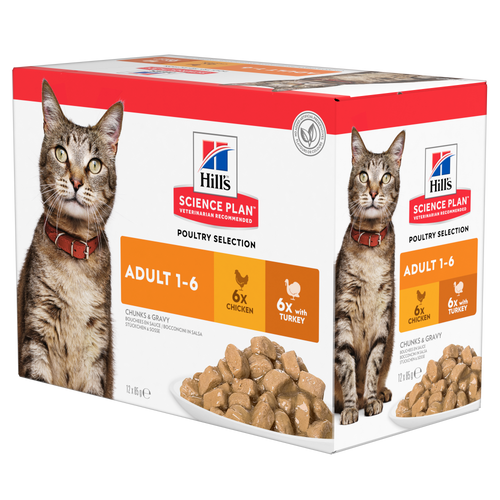
Related articles

To make a protein, amino acids are linked together in a long chain. The chain is then bundled into to a three-dimensional structure, like a tangled ball of yarn.

Show some love with wet foods: a great choice for pets with health issues.

Learn what your pet's microbiome is, how it contributes to your pet's gut and overall health, and why nutrition is important in maintaining healthy microbiomes.

In people, the right diet is very important. If you are eating the wrong way for your metabolism, activity level, age and lifestyle you could end up with health issues.

Put your pet on a diet without them knowing
Our low calorie formula helps you control your pet's weight. It's packed with high-quality protein for building lean muscles, and made with purposeful ingredients for a flavourful, nutritious meal. Clinically proven antioxidants, Vitamin C+E, help promote a healthy immune system.
Put your pet on a diet without them knowing
Our low calorie formula helps you control your pet's weight. It's packed with high-quality protein for building lean muscles, and made with purposeful ingredients for a flavourful, nutritious meal. Clinically proven antioxidants, Vitamin C+E, help promote a healthy immune system.

